We truly hope that each of you, our readers, will sincerely enjoy and appreciate this article we present to you about these 5 Thrilling Animals of Thailand. It was certainly our pleasure to gather the information for you. May it provide you with both education and increased awareness.
Certainly, these few magnificent species listed herein represent only a tiny portion of the similar species found throughout this region. It’s our belief, though, that they serve as excellent representations of the members of this Class. Check out our other articles for similar marvels.
King Cobra
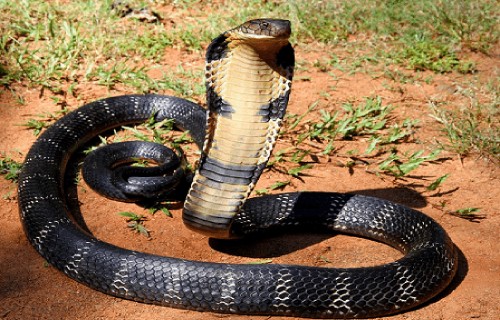
King Cobra Facts
- Heading up this article about these 5 Thrilling Animals of Thailand is the world-renowned snake best known as the King Cobra.
- The truly impressive King Cobra remains best known to the world for one outstanding fact. That’s the amazing statistic that it ranks as the longest known species of venomous snake known to man. Despite its great length, however, it remains rather surprisingly light.
- The most frequently used common name of this reptile creates a great deal of confusion, however, being very deceptive. That’s because, regardless of its other impressive attributes, it does not qualify as a true cobra. True cobras have decidedly different physical attributes.
- The reptile does have several other general appellations, however. That includes Hamadryad, derived from Greek mythology. Others consist of such tags as Raj Nag, meaning king of snakes, Serpent King, referencing its title, and Giant Cobra, understandably due to its size.
- Within the scientific world, though, it’s perhaps better known by its technical designation. That tag, unfortunately, like many such terms, remains somewhat difficult for the layperson to pronounce. That’s because this wonder of Nature holds the formal tag Ophiophagus hannah.
- Regardless of which term one uses, it remains worthy of respect. In point of fact, this remarkable animal actually forms the sole member of its own genus. No other known species even comes close to its physical qualities. This fact alone also makes the snake of great interest.
- This fascinating serpent also easily qualifies as fully worthy of being considered extremely dangerous to humans if provoked. This status holds true due to a combination of impressive factors. Those are the toxicity of its venom, and the quantity of the venom produced.
- For the moment, the IUCN lists the amazing King Cobra as Vulnerable. That status is reflected on the organization’s Red List of Threatened Species. Habitat loss forms a grave peril for the creature, given its region, of course. It also faces the threat of climate change, like other species.
King Cobra Physical Description
The mesmerizing King Cobra immediately captures the attention of those who encounter it, especially in the wild. That’s true due to combination of several reasons, however. Given its notorious reputation, most people recognize it on sight. It also impresses people because of its size.
In terms of physical attributes, the animal follows a pattern common among many species on earth. That’s the fact that it displays a certain degree of the physiological characteristic of sexual dimorphism. In the case of this particular animal, that trait manifests itself in terms of dimensions.
Among this variety of snake, males attain a greater size on average than their female counterparts. This extends to both length and body mass. This gender reaches up to 18 ft (5.5 m) in total length. The males of the remarkable product of evolution also typically possess thicker tails than females.
Individuals of that sex, meanwhile, reach notably shorter lengths than the males. These, in fact, rarely exceed 13 ft (4 m) in length. Although weights vary greatly between individuals, for a wide variety of reasons, overall measured females also achieve a lower average body mass than males.
When referencing those weights, however, it’s worth noting that the differences remain completely relative. A mean weight for an individual of either sex, excluding gravid females, of course, only equals roughly 13 lb (6 kg). The heaviest example ever recorded only weighed 26 lb (12 kg).
Despite the typical image of the King Cobra, body colors actually vary significantly between individuals. These range from olive green, brown, or black with pale yellow or cream-colored bands. The underbelly of the fascinating snake generally shows lighter, usually being pale yellow or cream.
Other aspects of the body also distinguish this species. The head evolved as noticeably broad and slifgtly flattened, as well. Unlike true cobras, its hood’s narrower but still flares when threatened. Fascinatingly, it further developed relatively large, round eyes with golden or copper-colored irises.
- Kingdom: Animalia
- Phylum: Chordata
- Class: Reptilia
- Order: Squamata
- Family: Elapidae
- Genus: Ophiophagus
- Species: O. hannah
King Cobra Distribution, Habitat, and Ecology
The stunning Kind Cobra evolved as indigenous to a moderately broad portion of the surface of the earth. Given its exotic nature, the precise location of that zone of habitation likely won’t surprise anyone here. The marvelous reptile developed as native to a very respectable portion of Asia.
In the southern portion of that region, it’s found inside the borders of the nations of India, Bangladesh, Bhutan and Nepal. In southeastern Asia, it lives in Myanmar, Thailand, Laos, Cambodia, Vietnam, Malaysia, and Indonesia. It’s also known to reside within at least four provinces in China.
Nature also provided it with an evolutionary advantage over many of its competitors. That’s true since it displays a high degree of flexibility regarding its choice of habitat. The marvel of evolution therefore thrives in a variety of habitats, primarily in various tropical and subtropical regions.
In all of these, though, it prefers areas with ample cover and access to water. It’s frequently found in dense, humid, tropical rainforests in its range. The wonder’s also frequently observed in areas comprised of mangrove forests. There, it’s generally spotted near river deltas and coastal regions.
It also shows a distinct fondness for both bamboo thickets and deciduous forests, the denser the better. The snake also inhabits sections of grasslands and even agricultural areas. Another flexibility concerns altitude, since it’s found at heights reaching up to 6,600 ft (2,000 m) above sea level.
Setting itself apart from most others, the creature also primarily preys on other snakes. However, most individuals occasionally consume small invertebrates. The King Cobra is classified as diurnal, primarily hunting during the day. During the night, it remains concealed, unless disturbed.
Despite its somewhat exaggerated reputation, this highly evolved reptile isn’t typically aggressive unless it’s provoked. When this happens, though, it raises as much as one-third of its entire body length into the air. Subsequent to that action, it also flattens its head in final preparation to strike.
Nature provided this efficient predator with yet another ability that both sets it apart and provides it with a distinct advantage. It’s fully capable of delivering multiple envenomings in a single encounter. Although it certainly isn’t the only poisonous snake of which this is true, it’s extremely uncommon.
In addition to its other unique attributes, this intriguing member of its Class represents the only known snake that builds nests for its eggs. These it builds using dry leaves and twigs. One mating produces between 7-43 eggs. Those that survive to adulthood live an average of about 20 years.
Clouded Leopard
Clouded Leopard Facts
- Next up in this compilation of 5 Thrilling Animals of Thailand is the gorgeous feline that’s best known by the term of the CLouded Leopard.
- The short term we’ve used herein serves as the most often employed common name for this beautiful wild feline. Yet, the stunning mammal does have at least one other general title. That’s the extremely similar epithet of mainland clouded leopard.
- Inside of scientific circles, though, many individuals may know it better by yet another tag. That’s its technical designation. Fortunately, that’s a comparatively simple one for the layperson to pronounce. It holds the official moniker of Neofelis nebulosa.
- The amazing animal received its first tag due to the efforts of Edward Griffith. The respected British naturalist accomplished the first recognition of the creature as a separate and distinct species. He managed that scientifically noteworthy deed in 1821.
- He did not assign the creature the technical epithet it holds today, however. He originally named it Felis nebulosa. Since that time, it’s gone through several renamings, due to ongoing research. It finally received the one it holds now at a much later date.
- Regrettably, the Clouded Leopard now finds itself in somewhat dire straits. It’s seen its population steadily reduced in modern times, for a variety of reasons. That trend further holds true across its entire range. The IUCN thus now lists it as Vulnerable.
- The marvelous work of Nature faces multiple threats to its continued existence as a species. Most of these perils stem from the actions of man. Some include ongoing poaching, despite being a protected species. It also faces the danger of climate change.
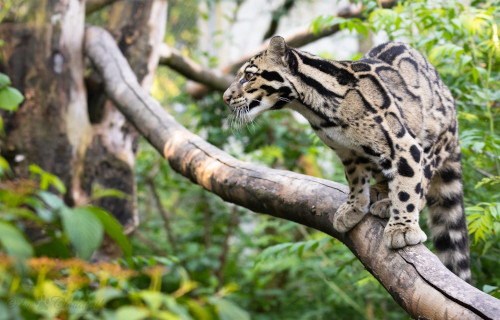
Clouded Leopard Physical Description
The gorgeous Clouded Leopard captures the attention of all those who encounter it, as most wild felines do. Some, though, only do so due to their visual appeal. This mammal has more to offer, however, because it also boasts some quite respectable dimensions.
In that specific regard, though, it follows a pattern common to its many relatives. That’s in the fact that it displays a certain degree of the physiological characteristic of sexual dimorphism. In its case, this natural trait manifests itself purely in terms of physical size.
Slightly smaller in size, females attain an average body length of approximately 27 – 37 in (68.6 – 94 cm). The tail also typically adds another 24 – 32 in (61 – 82 cm). Weights for this sex also remain less than the male. This usually ranges from roughly 22 – 30 lb (10 – 13.6 kg).
Males, meanwhile, achieve moderately greater lengths and much more significant masses. For them a mean body length equals about 32 – 43 in (81 – 108 cm). Their tail adds an additional 29 – 36 in (74 – 91 cm). Masses for them, however, average 44 – 55 lb (20 – 25 kg).
Otherwise, both the genders of the awesome Clouded Leopard present the same outward appearance. Despite the notable length and weight differences, shoulder height for both averages 20 – 22 in (50 – 55 cm). The males thus have a stockier build than the females.
It also has a distinctive pattern of coloring. The background consists of either ocher or dark gray. Yet, muliple splotches of dark gray or black mark the coat without pattern, and of random sizes and shapes. These even appear on the face, while the ears show purely black.
- Kingdom: Animalia
- Phylum: Chordata
- Class: Mammalia
- Order: Carnivora
- Family: Felidae
- Genus: Neofelis
- Species: N. nebulosa
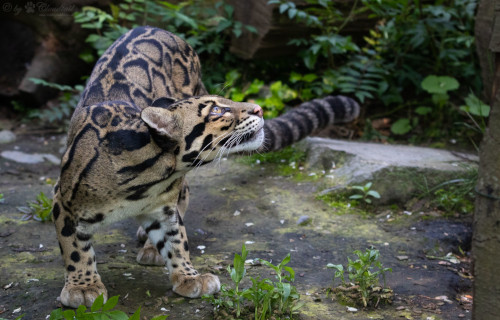
Clouded Leopard Distribution, Habitat, and Ecology
The breathtaking Clouded Leopard evolved as native to a comparatively broad swathe of the surface of the globe. The full extent of that zone of habitation might come as a surprise to some readers, though. That’s because the animal occupies a large portion of Asia.
Within that larger overall range, however, it doesn’t appear in every part of the continent. It mainly resides in the souteastern sections. From there, though, its territory also expands into China. Yet, in another direction, its range also reaches the Himalayan foothills in Nepal.
Fortunately, this incredible creature has an extremely high level of flexibility regarding its choice of habitat type. It therefore appears in a wide range of local ecosystems. This extends to altitudes, since it lives at heights ranging from near sea level to 12,200 ft (3,720 m).
In some parts of its territory, it lives in regions composed of sub-tropical, semi-deciduous forests. But, in other areas it also makes its home in largely evergreen woodlands. In some regions, such as Thailand, the intrepid feline also lives in sections of dry tropical forest.
Like many of its kindred around the world, the Clouded Leopard principally lives a solitary life. It’s also mainly nocturnal, and even mostly arboreal in nature. The cat’s extremely reclusive, and thus rarely seen, except for being caught by the occasional camera trap video.
Being a feline, it’s also naturally carnivorous in terms of diet. It’s versatile, though. Somtimes it actively stalks its prey, yet at others it waits in ambush. It primarily consumes moderate-sized prey, including macaques, lorises, pangolins, and squirriels, among others.
Saltwater Crocodile Facts
- Our next choice for inclusion in this gathering of 5 Thrilling Animals of Thailand is the magnificent reptilian men call the Saltwater Crocodile.
- This magnificent work of Nature and evolution most frequently goes by its informative common name across its territory. That term, however accurate, isn’t the only name applied to it, however. In point of fact, several others are sometimes used.
- The alternate names themselves also often provide clues to its nature. These include such terms as the Indo-Pacific crocodile, esturarine crocodile, sea crocodile, and marine crocodile. The animal’s also sometimes informally referred to as the saltie.
- Professional researchers, meanwhile, typically refer to the creature by its scientific name. That’s the technical name of Crocodylus porosus. Regardless of which name one chooses to use when referring to it, though, it’s an especially impressive crocodilian.
- The renowned German naturalist Johann Gottlob Theanenus Schneider made the first formal recognition of the reptile. The well known researcher acknowledged this incredible example of evolution as a separate and distinct species in the year 1801.
- The animal appears, for the moment, at least, to be maintiaing a population base that’s both stable and sufficient. That further seems to hold true throughout the entirety of its range. The IUCN therefore, presently lists the reptile as Least Concern on its Red List.
- The amazing Saltwater Crocodile nevertheless faces dangers that could potentially threaten it in the future. Habitat loss poses a potential threat, due to human expansion. The ongoing process of climate change, however, likely condstitutes its greatest threat.
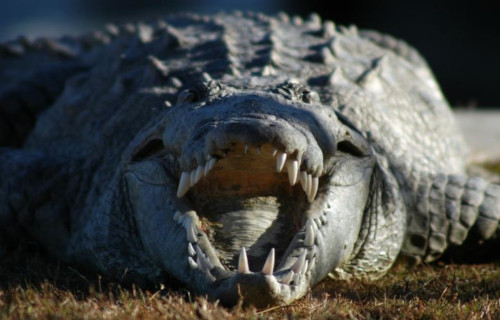
Saltwater Crocodile Physical Description
Sheer size alone isn’t the only trait of the Saltwater Crocodile that impresses those who view the creature. That characteristic nonetheless certainly does bear mentioning. That’s because this species presently constitutes the largest of all currently known crocodilians.
The species also, like many of its relatives, displays a degree of the physiological characteristic of sexual dimorphism. In its specific case, though, this ranks as particularly severe. That’s due to the fact that the males attain a length roughly twice that of females.
The significantly longer males reach an average legnth measuring about 20 ft (6 m). Exceptional specimens, however, sometimes attain lengths of as much as 23 ft (7 m). The males further reach a weight that averages approximately 1,000 lbs (453.6 kg).
Females of the species, meanwhile, only attain an average length measuring approximately 10 ft (3 m). Even the exceptional individuals rarely exceed this by much. Sheer mass, however, remains starkly contrasted, with females rarely exceeding 330 lb (150 kg)!
While rare indivuals exceed these weights in both genders, the two sexes remain otherwise virtually indistinguishable in simple appearance. Its snout also develops wider than most related species. A pair of ridges also extends the length of the snout, from the eyes.
The body of the Saltwater Crocodile further differs from most others in its girth. Its body develops as much stouter in form. In coloring, most adults manifest a dark, greenish-drab shade. A few light gray or tan areas sometimes appear, however, in various spots.
- Kingdom: Animalia
- Phylum: Chordata
- Class: Reptilia
- Order: Crocodilia
- Family: Crocodylidae
- Genus: Crocodylus
- Species: C. porosus
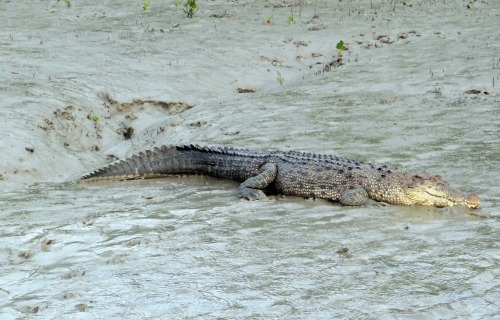
Saltwater Crocodile Distribution, Habitat, and Ecology
Fortunately, the remarkable Saltwater Crocodile evolved as native to a comparatively broad swathe of the globe. Interestingly, furthermore, that range roughly straddles the equator. It further does so, by random chance, almost equally across both hemispheres.
This animal appears as far north as the eastern coast of the country of India. From there, its range extends through Sri Lanka, Bangladesh, Myanmar, Thailand, Malaysia, Cambodia, and Vietnam, to name a few. That range extends as far south as northern Australia.
Wherever it makes an appearance, though, it displays highly specific preferences in terms of habitat. That’s because the remarkable crocodilian makes its home solely along the coastline. Individuals do, however, occasionally swim far out to sea, outside their range.
Most specimens spend the vast majority of their time inhabiting very specific habitat types. These principally consist of river deltas and mangrove swamps. In some regions, the incredible animal also migrate to warmer parts of its range during the local winter season.
The Saltwater Crocodile also differs from most of its kin in yet another manner. Although most crocodilains live as social creatures, this species mainly lives a solitary life. Most individuals, especially the males, further exhibit extremely strong territorial drives.
It also spends much of its time in a lethargic state. This allows it to survive for months at a time without feeding. When it does feed, however, it does so strictly as a carnivore, like other crocodiles. It further represents an apex predator throughout most areas of its range.
Common Bottlenose Dolphin
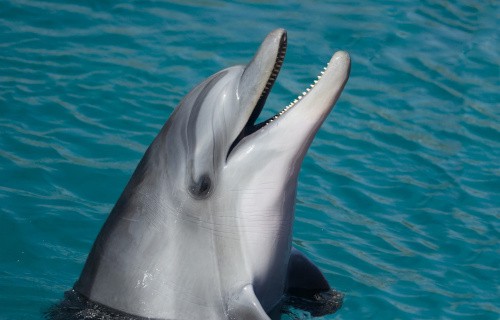
Common Bottlenose Dolphin Facts
- Appearing next in this listing of 5 Thrilling Animals of Thailand comes the only purely marine member, the Common Bottlenose Dolphin.
- This magnificent ocean-dwelling creation of evolution generally goes by the intriguing name due to its nature and appearance. It does have a very similar alternate general name, though. That’s the informative moniker of Atlantic bottlenose dolphin.
- Within scientific circles, however, it’s better known by its technical name. Fortunately for the layperson, that’s the relatively easy to pronounce term of Tursiops truncatus. No matter which term one chooses, it remains a beautiful and impressive creature.
- It received that official name due to the efforts of the English naturalist, George Mantagu. He accomplished the first recorded acknowledgement of it as a separate and distinct species. This scientifically noteworthy act occured in the year 1821.
- The animal’s common name suits it, as it’s perhaps the most numerous, widespread, and best-known of all its kin. It also has perhaps the most extensive zone of habitation of its relatives. Sadly, it’s also the most popular in marine parks and aquariums.
- Unlike many others of its kind, the Common Bottlenose Dolphin seems to be maintaing a sufficient population base. That further appears to hold true throughout the entirety of its known range. The IUCN therefore currently list it as Least Concern.
- The animal nevertheless does face potential threats to its existence, at least. In this, the same dangers exist as for other marine species. These include such factors as active hunting and accidental bycatch. Doubtless, though, its greatest threat is climate change.
Common Bottlenose Dolphin Physical Description
One way in which the majestic Common Bottlenose Dolphin distinguishes itself from other dolphins around the world is sheer size. That’s due to the fact that this wonder of Nature ranks as the largest of all known beaked dolphins. That’s an impressive claim to fame.
It does follow the same pattern as other many other cetacea, though. That’s because the fabulous animal does display a moderate degree of the physiological trait of sexual dimorphism. In its specific case, this trait manifests itself in terms of simple physical size.
Males generally attain a greater length and body mass than their female counterparts. In most instances, though, the difference isn’t greatly significant. Overall, both measurements vary significantly, often following different ranges. This includes both genders, as well.
As a general rule, however, individuals reach a length of between 6.6 – 13.1 ft (2 – 4 m). Weights also naturally vary accordingly. This ranges from 330 – 1,430 lb (150 – 650 kg). Exceptional specimens do occur, though, in both categories, regardless of gender.
In coloring, the Common Bottlenose Dolphin presents a nearly uniform gray shade. Slight variations occasionally present themselves in individuals, however. Upon close inspection, however, many present a slightly lighter shade on the underside of the body.
The cetacea further possesses a short, wel-defined nose. Often compared to a bottle, this serves as the source of the common name. Its neck evolved as more flexible than its cousins, too. That’s because five of their seven vertebrae aren’t fused, unlike other dolphins.
- Kingdom: Animalia
- Phylum: Chordata
- Class: Mammalia
- Order: Artiodactyla
- Family: Delphinidae
- Genus: Tursiops
- Species: T. truncatus
Common Bottlenose Dolphin Distribution, Habitat, and Ecology
Thankfully, the Common Bottlenose Dolphin evolved as native to a truly extensive range. In fact, it lives in marine waters across much of the globe. Incredibly, this mammal makes its home in every portion of the planet’s oceans, with the exception of the polar regions.
This means the creature is equally at home in either tropical, subtropical, or temperate marine waters. Experts estimate its current global population to be approximately 600,000. It also migrates great distances, either individually or in groups of various size
Intriguingly, groups of the cetacean live in groupings both near the shore and further out to sea. In this repsect, the two differing concentrations display differing habitat preferences. Those populations living further out tend to undertake the more significant migrations.
Those members of the species residing closer to shore typically migrate less often, and for shorter distances. These same specimens also adapt to warm, shallower waters. This frequently includes such varied areas as lagoons, estuaries, bays, and even harbors.
Again following the pattern established by its many kin, the Common Bottlenose Dolphin lives as a very social species. Most specimens live in small groups called pods. These groups average 15 in number, but sometimes exceed 100 members. Lone individual are rare.
Its diet consists mainly of shrimp, squid, eels, and a wide range of fish species. The mammal hunts using echolocation, and does so effectively. The pods often hunt as a team, increasing their effectiveness. It has few predators of its own. These mainly include orcas and sharks.
Reticulated Python
Reticulated Python Facts
- Closing out his compendium of 5 Thrilling Animals of Thailand we present you with the powerful constrictor named the Reticulated Python.
- This amazing creation of Nature and evolution is a notably large variety of python. In fact, although not the most heavily built, the animal currently ranks as the longest snake on earth. That impressive fact alone makes the creature worthy of note.
- Just as with other types of pythons, though, this truly amazing animal feeds as a constrictor, since the enormous snake has no venom. Fully grown adult individuals aditionally become more than sufficiently powerful enough to kill a human being.
- Such attacks on human beings by this particular species remain virtually unknown, however. This holds true despite what many people tend to believe. Though such events rarely occur, when they do, it usually happens in specific circumstances.
- These situations include if the snake has been removed from its natural habitat, or that habitat, frequently located near water, is disturbed. Related to this is the fact that the awesome Reticulated Python also ranks as a rather excellent swimmer.
- This truly remarkable trait ranks as one that the incredible reptile further shares with many of its related species around the world. Among this particular example of constrictor, however, adult specimens even occasionally venture far out at sea.
Reticulated Python Physical Description
Most notably, the Reticulated Python fully earns its designation as the longest snake known to man. To the amazement of some, exceptional adult specimens sometimes approach 23 ft (7 m) in length. These truly gigantic individuals do not occur often, though.
Typical adults actually measure around 20 ft (6.1 m) in total length, and the usual mature individual further weighs about 165 lb (75 kg). The species presents no discernible sexual dimorphism, however, with both genders possessing the same appearance and size.
Its markings remain highly distinctive, and typically consist of intricate geometric patterns. These patterns also combine a quite wide variety of color shades. The exact colors vary according to the geographical range, sometimes making the snake difficult to identify.
This great variation in coloring among the Reticulated Python also represents an evolutionary adaptation to the local environment. Its remarkable natural camouflage also serves to make this highly dangerous animal almost invisible in its respective habitats.
- Kingdom: Animalia
- Phylum: Chordata
- Class: Reptilia
- Order: Squamata
- Family: Pythonidae
- Genus: Python
- Species: P. reticulatus
Reticulated Python Distribution, Habitat, and Ecology
The Reticulated Python appears to be endemic to quite a wide range. This area extends across much of Southeast Asia. In fact, this range extends from India, Bangladesh, and Laos, through Indonesia. It also includes numerous island countries, such as the Philippines.
In addition to its other impressive characteristics, it remains highly adaptable to its surroundings. As a result of this ability, it thrives in a rather wide variety of habitats. However, these regions of habitation typically include woodlands, grasslands, and forests.
But even within that native range, this fascinating reptile remains quite versatile in its habitat requirements. Amazingly, the enormous animal frequently inhabits rivers, lakes, and even large streams within these areas, being an excellent swimmer.
It feeds almost exclusively as an ambush predator, like other known types of constrictors. The diet, however, understandably varies, depending upon its location. This commonly includes such prey as larger mammals, but smaller specimens will feed on birds and rodents.
This species, like other snakes, evolved as oviparous. A female Reticulated Python will lay anywhere from 15-80 eggs per clutch, after mating. These then require an average of about 88 days to hatch. Newly hatched specimens average about 2 ft ( 61 cm) in length.

5 Thrilling Animals of Thailand
We truly hope that each of you enjoyed reading, and hopefully learning from, this article we’ve written for you about these 5 Thrilling Animals of Thailand. It’s also our fervent hope that doing so has left you with either a new or fully renewed appreciation for such remarkble wonders of Nature.
Unfortunately, however, many of their numerous kindred around the world now find themselves facing strong threats to their continued existence as a species. Many of those dangers, in fact, stem from the actions of mankind. We must do all that we can to protect and preserve them all.
Check out our other articles on 3 Wondrous South American Waterfalls, Weka, Achemon Sphinx Moth, Blood Iris, Guiana Dolphin, Earth’s Amazingly Abundant Avians
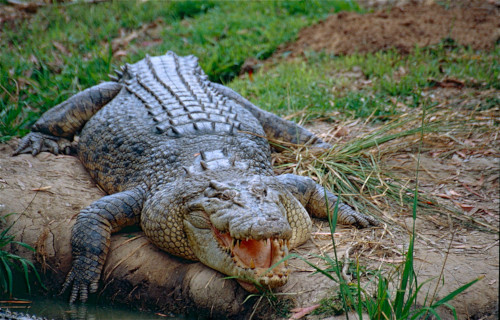

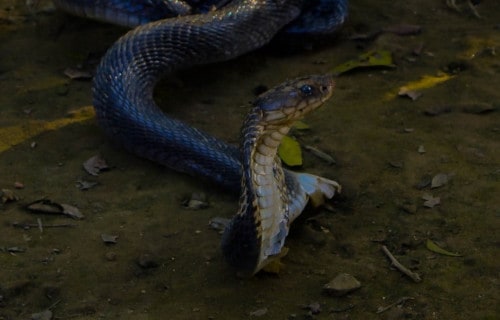
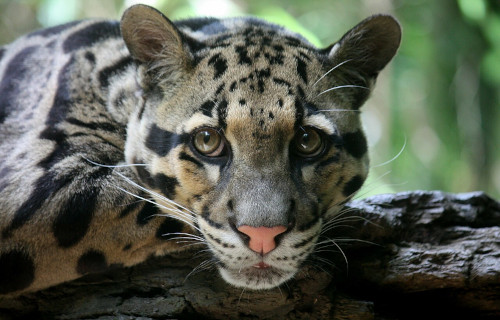
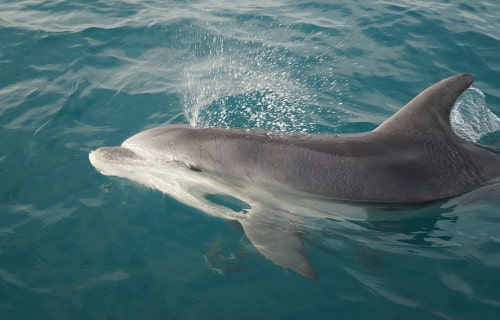

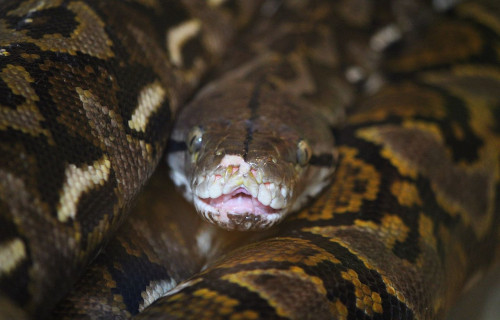










Leave a Reply